-
How to Read your Eye Prescription and What it Means
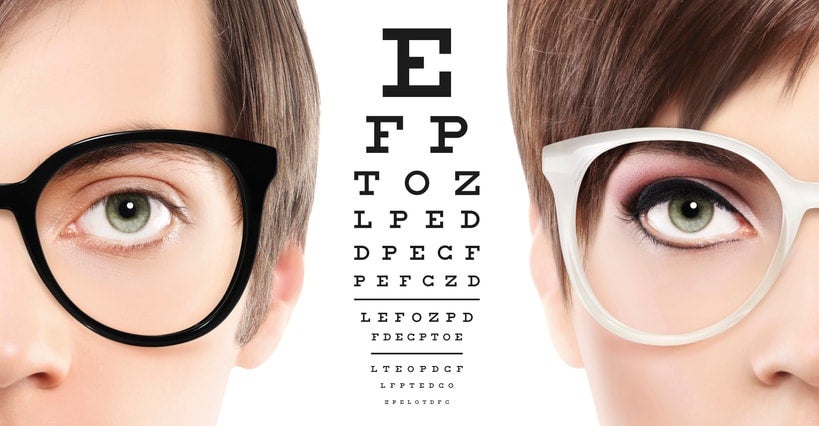
You’ve visited the eye doctor and obtained a prescription for eyeglasses or contacts, but when you look at your prescription, all you see is letters and numbers. For the uninitiated, an eye prescription can be confusing. It’s actually not too complicated, once you know what those letters and numbers mean.
The numbers on your prescription will be listed under headings listed as OS and OD. Those headings are Latin abbreviations: OS means oculus sinister, which refers to the left eye, and OD means oculus dexterous, the right eye. Some prescriptions will also have the abbreviation OU, which stands for oculus uterque and pertains to both eyes. You might also see the letter D, which stands for diopters, the unit doctors use to measure
You’ll also notice that in front of the numbers that follow there are plus or minus signs. A plus sign (+) indicates farsightedness, while a minus sign (-) means that you’re nearsighted. How nearsighted or farsighted you are is indicated by the numbers: as a rule, the further away the number is from zero, the worse your vision and the higher your requirement for vision correction.
For instance, a prescription that says -1.00 indicates one diopter of nearsightedness, which is a fairly mild level of nearsightedness. Someone with a higher level of nearsightedness, perhaps -4.25, would require a much stronger corrective lens, which would be thicker. Farsightedness works the same way, with a +5.00 prescription being much stronger than, for instance, a +1.00.
Are there more letters and numbers on your prescription? If you have astigmatism, there should be three sets. They will generally be written as S x C x Axis. S means spherical, and it will be the number discussed earlier, describing farsightedness or nearsightedness. C is for cylinder, which is referring to the astigmatism. This can be a negative or positive number, showing in diopters your degree of astigmatism. The larger the number, the more severe the astigmatism. The number for the Axis is expressed in degrees and will be somewhere between 0 and 180. Astigmatism is a curvature of the cornea, and the Axis is the number that indicates that curvature’s orientation.
If your prescription says ADD, that abbreviation is referring to the magnifying power for your reading, progressive or bifocal lenses. The same number will apply to both eyes. If you see the abbreviation PD, that stands for Pupillary Distance, the distance between the centers of your two pupils.
On a contact lens prescription, you’ll find the same listing of power under OD and OS, and some of the same information you’d see on an eyeglasses prescription. In addition, however, a contact lens prescription will include the prescribed brand, as well as numbers following the abbreviations BC and Dia. BC means Base Curve, Dia stands for diameter, and these two measurements together ensure the proper fit on your eye’s surface.
If you are looking for an eye doctor, the Gerstein Eye Institute in Chicago can help. Since 1968, the Gerstein Eye Institute has been providing exceptional ophthalmologic care to patients in the Chicago area. With decades of experience in ophthalmology, our certified professional staff members work hard to provide the kind of personalized care that keeps patients coming back year after year, eventually entrusting the eye health of their children and grandchildren to us as well. To schedule an appointment, call us at (773) 973-3223 or contact us through our website.
-
How to Heal your Eyes Overnight

Ah, bedtime! Sleep is one of the most restorative things we can do for our bodies, and as we rest overnight, we’re giving our bodies the chance to burn calories, renew our minds, and even heal from injuries. How does getting a full night of sleep affect our eyes? Additionally, what can we do to help promote eye health while we’re sleeping? Here, we offer tips on how to heal your eyes overnight.
- Getting the right amount of sleep can help prevent several eye issues. Those who do not get a full night of sleep each night are at risk of conditions like ischemic optic neuropathy, eye spasms, eye strain, and dry eye. The quality of your sleep matters, too. Sleep apnea, a condition that causes sporadic interruptions in breathing that disrupt your sleep, has been linked to the development of glaucoma. The National Sleep Foundation recommends that adults get somewhere between six and ten hours of sleep each night, and studies have shown that getting at least five hours of sleep each night is vital for eye health.
- Go to bed with a clean face. Gently remove any eye makeup, using eye makeup remover or a cotton pad with olive oil or another pure oil. Steer clear of anything with heavy fragrance or essential oils, to avoid irritating the sensitive skin around your eyes. Use patting motions and light, gentle, swipes, avoiding any rubbing or pulling at this tender area. Be similarly careful in the selection and application of any eye cream or nightly moisturizer.
- What you do during the day matters, too. Eat a balanced diet, full of nutrient-dense foods like greens, fish, and sweet potatoes, and consider taking a daily vitamin to promote eye health. If you must spend a great deal of time working at a computer, follow the 20-20-20 rule to prevent eye strain. Look away from the computer for 20 seconds, every 20 minutes, focusing on something 20 feet away.
- If your eyes seem puffy or tired, try a home remedy. Resting your eyes for a few minutes under cucumber slices, cooled chamomile tea bags, or even cold spoons. You may also find it helpful to find an eye cream with antioxidants, vitamins, and moisturizers.
- See an eye doctor regularly. While sleeping and eating well can provide your body with the resources it needs to heal your eyes overnight, regular visits to the eye doctor are important for finding and treating eye problems. Many eye diseases have no symptoms in their beginning stages, yet are most easily remedied when they’re discovered early.
If you are looking for an eye doctor, the Gerstein Eye Institute in Chicago can help. Since 1968, the Gerstein Eye Institute has been providing exceptional ophthalmologic care to patients in the Chicago area. With decades of experience in ophthalmology, our certified professional staff members work hard to provide the kind of personalized care that keeps patients coming back year after year, eventually entrusting the eye health of their children and grandchildren to us as well. To schedule an appointment, call us at (773) 973-3223 or contact us through our website.
-
Glasses Cleaning and Care Tips
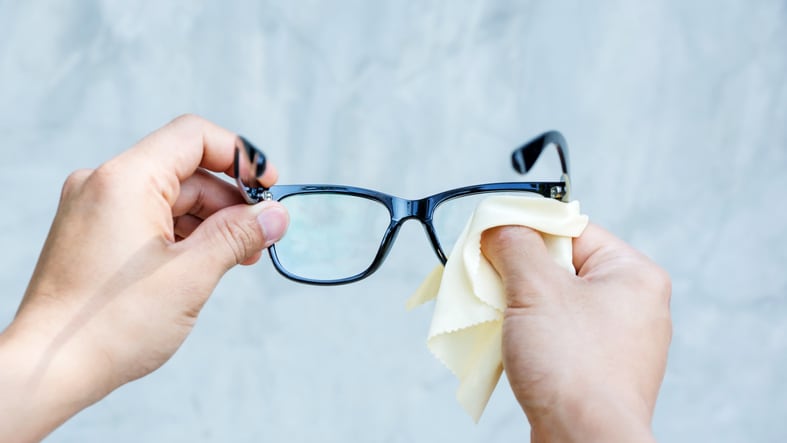
Eyeglasses aren’t just an important tool for improving your vision- they’re an investment. Once you’ve found the right pair, you’ll want to take excellent care of them, so that they’ll last a long time and keep you seeing clearly. Here, we offer some glasses cleaning and care tips to help you care for your glasses the right way, not just to keep them clean, but also to prevent scratches and other damage.
First things first: some dos and don’ts for keeping your lenses sparkling clean.
- Do start with clean hands. Before you ever touch your eyeglasses, wash and dry your hands thoroughly. Make sure to use lotion free soap and dry with a clean, lint-free towel if you’re going to be working with your glasses.
- Don’t pull off your glasses and rub them with your shirttail. Your clothing can have dust, debris, and particles that can scratch your glasses. Using a microfiber cloth designed to clean glasses is a better bet, but a dry cloth is still not as good as water.
- Do use lukewarm water to rinse your glasses. Hot water can damage some eyeglass coatings, but lukewarm water will go a long way toward removing the dust and debris that can scratch your lenses when you’re cleaning them.
- Don’t use saliva to clean the lenses. Your spit is not going to do a good job, and it’s also not hygienic.
- Do use lotion-free dishwashing liquid to help get them really clean. Use only a small amount, because dishwashing liquids are typically very concentrated. Gently rub the lenses on both sides, then clean all parts of the frame, including the nose pads and the part that goes behind your ears.
- Don’t use household glass or surface cleaners on eyeglasses. The chemicals used in these products can damage the coating on your glasses.
- Do rinse away all traces of soap. If soap is left on your lenses, they’ll smear when you dry them.
- Dry with a shake and a polish. Shake the glasses to get most of the water off of the lenses, then look them over carefully to make sure they’re clean. Using a clean, lint-free towel that hasn’t been laundered with a dryer sheet, carefully dry the frames and lenses. Make sure the towel is completely clean, because dust, dirt, cooking oil, or any other substance can cause scratches on your lenses. If any spots remain, gently buff them with a clean microfiber cloth.
- Don’t use random fabrics to clean your lenses. Paper towels, tissues, napkins, and toilet paper can all leave your glasses linty, scratched, or smeared.
Now that you know how to clean your glasses, how can you keep them free of scratches? When you purchase glasses, opt for scratch resistant coating, to make it easier to keep them from harm. Further, one of the most important things you can do is to make a rule for yourself: if they’re not on your face, they’re in their case.
Remember, no pair of eyeglasses will last forever. Over time, normal use and exposure to the environment is bound to create a few scratches. Occasionally, you’ll probably even drop or misplace your eyeglasses. Even with scratch resistant coating, your glasses are no scratch proof. Your eye care provider can help you with an anti-scratch warranty for your lenses, but ultimately, you’re going to need to replace them because scratches in the lenses can irritate your eyes.
When it’s time to get new glasses, it’s time to have a complete eye exam to make sure you’re using the right prescription. If you are looking for an eye doctor, the Gerstein Eye Institute in Chicago can help. Since 1968, the Gerstein Eye Institute has been providing exceptional ophthalmologic care to patients in the Chicago area. With decades of experience in ophthalmology, our certified professional staff members work hard to provide the kind of personalized care that keeps patients coming back year after year, eventually entrusting the eye health of their children and grandchildren to us as well. To schedule an appointment, call us at (773) 973-3223 or contact us through our website.
-
Maintaining Healthy Eyes in Winter

Most people have plenty of health concerns during winter. Cold and flu season can be rough, it’s often hard to stay warm, and winter is a risky time for slips and falls. What many don’t realize, though, is that eyes need extra protection during the winter, too. Maintaining healthy eyes in winter requires a little bit of effort, but it’s worth it to keep your vision strong and your eyes in tip-top shape.
- You may not realize it, but you definitely need sunglasses in the winter. It’s easy to remember to wear sunglasses when it’s hot outside, but there are several ways the sun can damage your eyes when it’s cold. Snow is especially problematic because UV rays can enter your eyes directly or from being reflected off of the snow. Wear sunglasses that protect against UV rays, and if it’s especially bright outside, wear a hat or a visor.
- Sometimes, sunglasses aren’t quite enough protection. When you’re being active outdoors in winter, it’s easy to get debris like dirt, bark, slush, or ice into your eyes. Sunglasses protect against some mishaps, but goggles are a better bet for maximum protection. Look for goggles with UV protection built in, or choose goggles that allow you to wear sunglasses underneath.
- What you eat has a huge impact on your eyes. Dry eyes are one of the biggest problems in winter, and eating a diet rich in omega-3 fatty acids can help alleviate this problem. About three and a half ounces of fatty fish like mackerel, tuna, salmon, anchovies, or trout can provide about one gram of omega-3s.
- Staying hydrated is important for every part of your body, including your eyes. Sometimes, people forget to drink water when it’s cold outside, but maintaining the proper hydration can help keep your eyes from feeling dry.
- It’s important to keep your eyes moist in winter. Cold air outside and hot air from the heater indoors can really dry out your eyes, causing them to feel uncomfortable and gritty. Try not to sit too close to heat sources, and use a humidifier or artificial tears to help keep your eyes from getting too dry.
- To keep eyes healthy, keep your hands off of them. Your hands tend to carry bacteria, and putting them up to your eyes can cause an infection. What’s more, rubbing dry eyes can cause them to become even more irritated and uncomfortable.
- For good eye health, take frequent breaks from screens. Whether you’re working at your computer all day or bingeing your favorite show when it’s too cold to want to go out, too much staring at a screen can leave your eyes dry and irritated. Take frequent breaks, adhering to the 20-20-20 rule: every 20 minutes, look away from the computer, focusing on something 20 feet away for at least 20 seconds. It’s also smart to think about blinking because people tend to blink less when they’re staring at a computer screen.
If you are looking for an eye doctor, the Gerstein Eye Institute in Chicago can help. Since 1968, the Gerstein Eye Institute has been providing exceptional ophthalmologic care to patients in the Chicago area. With decades of experience in ophthalmology, our certified professional staff members work hard to provide the kind of personalized care that keeps patients coming back year after year, eventually entrusting the eye health of their children and grandchildren to us as well. To schedule an appointment, call us at (773) 973-3223 or contact us through our website.
-
What is a Stye, and How Should You Deal with It?
Have you ever had a stye? It usually starts with a little bit of pain or a feeling of heaviness in your eyelid, and you’ll notice a little red spot on your lower eyelid. It’s not harmful, but it can be unsightly, uncomfortable, and annoying. What, exactly is a stye? More importantly, how should you deal with it to make it go away?
A stye, also known as a hordeolum, is a bump near the edge of your eyelid caused by a localized infection in the eyelid. Styes develop from an eyelash follicle or oil gland that becomes clogged somehow, either from oil, debris, or bacteria. They can be a complication of blepharitis, an inflammation of the eyelid or they can be the result of stress.
The symptoms of a stye include watery eyes, pain, tenderness, itching, and redness. Styes can make eyes feel sensitive to light or bruised and can cause a feeling of a foreign body in the eye. They don’t impact vision, though, and they typically go away on their own, though not usually as quickly as the person with the stye would like. There are some things you can do to speed up the healing time:
- Use a warm compress. You can buy compresses especially made for eyes, or you can use a clean, warm washcloth as a compress. Just press the compress to your eyelid for about ten minutes, at least four times each day until the stye is healed.
- Massage the affected area. Use the tips of your fingers to gently massage the area, making sure your hands are scrupulously clean, and taking care not to poke yourself in the eye.
- Eye drops may help heal the infection. Your eye doctor can recommend medicated eye drops or antibiotic ointments that you might find helpful.
- Try eye lid scrubs. Specially formulated eyelid scrubs are similar to a moist towelette and are designed to address the underlying problems of bacteria or blepharitis.
You can sometimes prevent a stye by keeping your eyelids extremely clean. Don’t sleep in eye makeup, and avoid touching your eyes throughout the day. It may also help to manage your stress. It’s not always possible to avoid them, though, and if you do get a stye, it’s wise to try to reduce its duration. When a stye lasts for a long time, it can turn into a chalazion, which may require a steroid injection or lancing. Your doctor can lance the chalazion for you, but you should never try to squeeze or pop a bump on your eyelid at home. Squeezing a stye can cause a serious eye infection.
There are eyelid bumps that are not styes, like millia and xanthelasma. It’s a good idea to see a doctor if you have a bump on your eyelid, rather than assuming you know what it is and treating it at home. Your doctor will be able to correctly identify the bump on your eyelid and recommend the right treatment for your specific condition.
If you are looking for an eye doctor, the Gerstein Eye Institute in Chicago can help. Since 1968, the Gerstein Eye Institute has been providing exceptional ophthalmologic care to patients in the Chicago area. With decades of experience in ophthalmology, our certified professional staff members work hard to provide the kind of personalized care that keeps patients coming back year after year, eventually entrusting the eye health of their children and grandchildren to us as well. To schedule an appointment, call us at 773.596.9545 or contact us through our website.
-
Glaucoma prevention tips
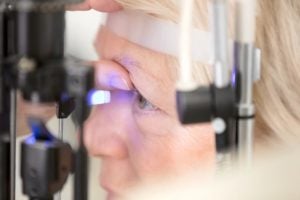 The second leading cause of irreversible blindness globally, glaucoma affects more than three million people in the United States alone. Typically, it doesn’t have any symptoms, and many people don’t realize they have glaucoma until it is at an advanced stage. There’s no cure for glaucoma, though the symptoms can be treated and the progression of the disease slowed if it’s caught early. There are, however, some steps you can take to prevent glaucoma.
The second leading cause of irreversible blindness globally, glaucoma affects more than three million people in the United States alone. Typically, it doesn’t have any symptoms, and many people don’t realize they have glaucoma until it is at an advanced stage. There’s no cure for glaucoma, though the symptoms can be treated and the progression of the disease slowed if it’s caught early. There are, however, some steps you can take to prevent glaucoma.- Protect your eyes. Wear protective eyewear any time you’re participating in sports, doing a home improvement project, or engaging in any other activity that puts your eyes at risk. Injury to the eye can cause secondary or traumatic glaucoma. Prevent overexposure to UV rays by wearing sunglasses or a wide-brimmed hat when you’re outside.
- Exercise regularly. Moderate exercise, at least three times a week, can lower your risk of glaucoma. Avoid exercises like headstands, which can increase intraocular pressure, one of the major risk factors for glaucoma.
- Fill your diet with nutrient-dense foods. Foods that support eye health include dark green, yellow, and orange fruits and vegetables, fruits and vegetables high in vitamin C, and foods with vitamin A, like sweet potatoes, mangoes, milk, egg yolks, and liver. Foods that contain vitamin E, like eggs, wheat germ, nuts, vegetable oils, and whole grains, are good for your eyes, as are foods with vitamin D, like fatty fish and egg yolks. Also important are foods with zinc, like oysters, red meat, poultry, beans, and nuts, and foods with omega-3 fatty acids, like walnuts and wild salmon.
- Do the things that you already know support your overall health. Maintain a healthy weight, don’t smoke, keep your blood pressure under control, and limit caffeine consumption.
- See an eye doctor regularly for exams. The single most important thing you can do to protect your eyes from the damaging effects of glaucoma is to have regular eye exams. Before age 40, you should be seen every two to four years, and then every one to three years up to age 54, moving to every one to two years at 55 of over. If you’re a person with high-risk factors, like African heritage, diabetes, or a family history of glaucoma, you should be tested for glaucoma every year or two after you turn 35. The best way to prevent vision loss from glaucoma is to catch the disease in the early stages so that you can receive treatment to slow its progression.
If you are looking for an eye doctor, the Gerstein Eye Institute in Chicago can help. Since 1968, the Gerstein Eye Institute has been providing exceptional ophthalmologic care to patients in the Chicago area. With decades of experience in ophthalmology, our certified professional staff members work hard to provide the kind of personalized care that keeps patients coming back year after year, eventually entrusting the eye health of their children and grandchildren to us as well. To schedule an appointment, call us at (773) 973-3223 or contact us through our website.
-
What Causes Itchy Eyes and Eyelids — and How to Get Relief
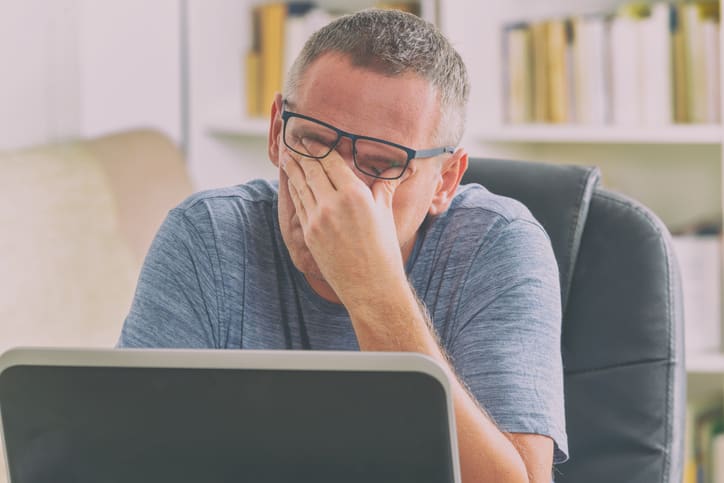
Why are your eyes itching? More importantly, what can you do about it? Itchy eyes can make a person feel frantic, and when you’re eyes itch, it’s hard to concentrate on anything else. Rubbing your eyes is an almost irresistible urge, but it’s a bad idea because it can make things worse and sometimes even cause a corneal abrasion. There are better ways to handle the problem, so here, we give you the run-down on itchy eyes and eyelids.
What makes eyes itch, anyway? Most of the time, it’s allergies. Some sort of allergen causes your body to release histamines into the tissues around the eyes, and you’re left with itching, redness, and swelling. The allergen might be pollen, dust, or animal dander, and seasonal allergies can cause allergic conjunctivitis in the spring when outdoor allergens like grass and weeds are in full force. Things like mold and dust, though, cause allergic reactions all year long. Sometimes, the culprit is a product you’re using, like contact lens solution, makeup, lotions, soaps, or even artificial tears.
Allergies aren’t the only thing that might be making your eyes itch, though. Some people find that dry eye syndrome or Meibomian gland dysfunction cause both itching and burning. If your eyes are red and inflamed, the cause might be an inflammatory condition called blepharitis, caused by bacteria or microscopic mites. Sometimes, something as simple as wearing your contact lenses too long can cause your eyes to itch.
Because there are so many reasons for eyes to itch, it’s smart to see an eye doctor to determine the cause. Often, though, itchy eyes can be treated without using medicines. Placing cold compresses over the eyes can bring relief within just a few minutes, and you can repeat this process as often as you need to do so. Sometimes artificial tears can be used to treat eye allergies because they wash the allergens out of the eyes. Keeping the bottle of artificial tears in the refrigerator can make them particularly soothing to burning, itching eyes. Allergy medications, both in oral form and eye drops, can help if your problem is an allergen.
In many cases, your doctor will need to prescribe eye drops or oral medications to treat your itchy eyes and eyelids. It’s important to follow your doctor’s advice, and use the right kind of treatment for your particular condition. The good news? Some medications can make you less prone to having itchy eyes in the future.
If you are looking for an eye doctor, the Gerstein Eye Institute in Chicago can help. Since 1968, the Gerstein Eye Institute has been providing exceptional ophthalmologic care to patients in the Chicago area. With decades of experience in ophthalmology, our certified professional staff members work hard to provide the kind of personalized care that keeps patients coming back year after year, eventually entrusting the eye health of their children and grandchildren to us as well. To schedule an appointment, call us at (773) 973-3223 or contact us through our website.
-
How to Know if a Painful Eye is an Emergency

When your eye hurts, it’s hard to think of anything else. Whether it’s an itching, burning, shooting pain on the surface of your eye, or a deeper, throbbing pain inside your eye, eye pain can be excruciating and hard to manage. Should you see a doctor? Is it time to go to the emergency room? If the pain is severe enough, or if you’ve lost vision, the answer may be yes. Here’s how to know whether your painful eye is an emergency.
What can cause a painful eye? It could be allergies, illness, injury, infection, or a foreign body in the eye. Symptoms vary, but if you have any of the following symptoms, you should consider calling for an appointment with an eye doctor.
- Eye pain
- Redness
- Irritation caused by contact lenses
- Discharge
- Eye injury
- Welder’s burn
- Swelling or puffiness
- Styes
Sometimes, though a painful eye is too severe to allow you to wait for a doctor’s appointment. Trying to wait it out could cause the problem to get worse, and might even result in a loss of vision. Seek emergency medical care as soon as possible if you have any of the following symptoms.
- Unusually severe eye pain, especially if it’s accompanied by a headache, fever, or sensitivity to light
- A sudden change in vision
- Eye pain with nausea or vomiting
- A foreign object or chemical in your eye
- Halos around lights
- Trouble moving your eye or an inability to keep it open
- Blood or pus coming from your eyes
If you have an eye emergency, and it’s after regular office hours, you may have no choice but to go to the emergency room. If you can catch the problem before offices close, though, it’s a much better idea to see an eye doctor. Emergency rooms don’t always have the right equipment for examining the eyes, and they might not have doctors or nurses who specialize in caring for eyes. Because a misdiagnosis could potentially result in vision loss, and because you’ll probably be given a referral to an eye doctor anyway, it’s typically better to skip the ER and go straight to an ophthalmologist or optometrist.
Even if it’s after hours, if you call your eye doctor there may be information available, either in a recorded message or through the doctors’ answering service, about where to seek emergency eye care. There are situations, though, in which an emergency room trip is warranted. If you’re injured in other places in addition to the eye, if your eye has been impaled, if you are bleeding from the eyes, or if you’ve had a head trauma, it’s smart to head to the ER. What you should never do is try to treat painful eye conditions on your own, without the benefit of medical advice.
If you are looking for an eye doctor, the Gerstein Eye Institute in Chicago can help. Since 1968, the Gerstein Eye Institute has been providing exceptional ophthalmologic care to patients in the Chicago area. With decades of experience in ophthalmology, our certified professional staff members work hard to provide the kind of personalized care that keeps patients coming back year after year, eventually entrusting the eye health of their children and grandchildren to us as well. To schedule an appointment, call us at 773.596.9545 or contact us through our website.
-
How to Properly Care for Contacts
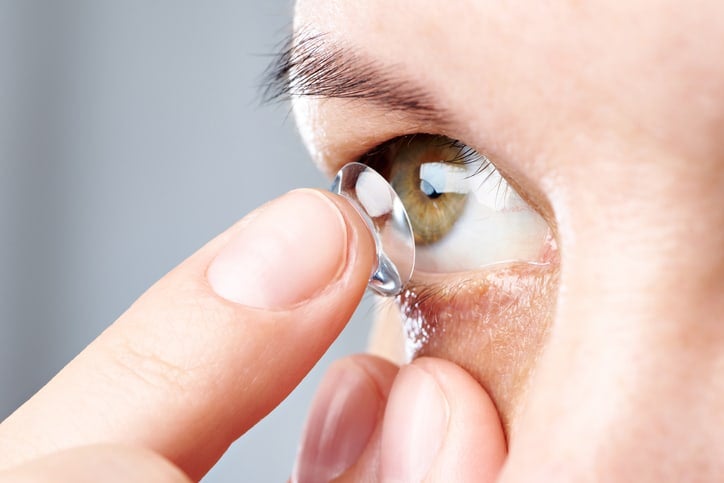
If you need corrective lenses, contact lenses can be a real boon. They’re great for active people, won’t interfere with your fashion sense, and can just make life easier overall. If you don’t take good care of your contacts, though, you could cause real harm to your eye health. Here, we offer some simple instructions for properly caring for your contacts.
- Keep your hands clean. Never touch your contacts without washing your hands first with a mild soap, free of perfume, oils, and Dry your hands with a clean towel that’s free of lint. Keep your fingernails short and smooth so that you won’t scratch your contacts or your eye.
- Mind when you do your beauty routine. If you’re planning to use hair spray, use it before putting in your contacts, but if you’re going to wear eye makeup, put it on after your lenses are already in. Take your contacts out before you remove your eye makeup.
- Follow your doctor’s advice about products. Some contact lenses require special care, and some eye products aren’t safe for contact wearers. When choosing a disinfecting solution, eye drops, or cleaners, always use the products your doctor recommends.
- Keep bacteria away from your lenses. Don’t use tap water directly on your contact lenses, and never rinse a lens by putting it in your mouth. Instead, clean, rinse, and disinfect your lenses with fresh contact lens solution every time you take them out of your eyes. Don’t add the solution to what’s already in the case, but clean your lens case every time you use it with sterile solution or hot tap water.
- Clean your lenses the right way. Rub each lens gently with your index finger in the palm of your other hand to remove surface buildup. Inspect each lens before putting it into your eye, and never wear a contact lens that’s damaged.
- Wear your contacts safely, asking your doctor for advice on care and longevity. If you think you’re going to have trouble remembering how long your doctor said it was safe to wear your lenses, ask for a chart to track your schedule.
- Use good hygiene practices when it comes to your contacts. Never wear someone else’s lenses, and be careful not to let the tip of the solution bottles touch things like your fingers, eyes, or contacts. Take care not to contaminate your lenses by contaminating the solution.
- Be careful with your eyes when you’re out and about. Wear sunglasses or a wide-brimmed hat in the sun, because contacts tend to make your eyes more sensitive to light. Keep your eyes moist with a rewetting solution or saline solution, and don’t swim with contacts in.
- When in doubt, take them out. If your eyes are irritated, take out the contact lenses and don’t wear them again until you’ve spoken with your doctor’s office, to avoid developing an infection. If you have vision loss, blurred vision, light flashes, eye pain, infection, swelling, unusual redness, or irritation, take them out and see your doctor as soon as possible.
For a contact lens wearer, there’s no more important resource than a good eye doctor. If you are looking for an eye doctor, the Gerstein Eye Institute in Chicago can help. Since 1968, the Gerstein Eye Institute has been providing exceptional ophthalmologic care to patients in the Chicago area. With decades of experience in ophthalmology, our certified professional staff members work hard to provide the kind of personalized care that keeps patients coming back year after year, eventually entrusting the eye health of their children and grandchildren to us as well. To schedule an appointment, call us at (773) 973-3223 or contact us through our website.
-
How to Find the Perfect Frames

What’s the secret to choosing the perfect eyeglasses? Once you’ve got the right prescription in hand, it’s time to pick the right frame for your face. How do you choose? There’s some debate over whether face shapes are an accurate metric for choosing the best frames, so we’ll look at a few different aspects that come into play.
- Face shape is certainly part of the puzzle. Basically, you want to choose frames that complement and balance the shape of your face.
- A round face is best served by square or rectangular frames, wider than the face, to make it appear slimmer and longer.
- Oval faces can take just about any frame but typically look best in geometric frames with a strong bridge. Because oval faces are typically symmetrical, it’s best not to throw off the natural balance by choosing frames that are too large.
- To soften the angularity of a square face, choose oval or round frames, avoiding anything boxy or angular.
- A diamond-shaped face with delicate features will benefit from frames that are wider than the cheekbones and draw the eye upwards. Good examples of this are cat eye glasses and oval frames.
- If your face is heart-shaped, choose frames with low-set temples and bottom-heavy lines, or glasses that draw attention away from your forehead, like round frames or square frames with curved edges.
- Perhaps more important than face shape is the look of your features. No matter what your face shape may be, you can balance sharp, angular features with frames in soft shapes, or offset soft, rounded features with frames that have straight lines. It’s also a good rule of thumb to choose glasses that direct attention away from the most prominent part of your face.
- Consider color carefully. Most people choose neutral frames because they go with just about everything. However, you can match your frames to your coloring, choosing to complement your eye or hair color or skin tone.
- Eyes: If you need a professional look, choose neutral, subdued tones. If you’re going for a fun, casual look, choose a complementary color to make your eyes pop. For blue eyes, that could mean orange tones, tortoiseshell or brown. To make brown or amber eyes stand out, choose a bold color like green or blue. Gray eyes look great with a brightly colored frame, and green eyes look good with earth tones or a bold purple or gold.
- Hair: With black hair, darker frames typically work well, in tones that complement your undertones. White or gray hair gives you the freedom to play around with just about any color, and red hair allows for bold colors, as long as the color isn’t red. If you have warm undertones in your blond or brown hair, you’ll probably look good in tortoiseshell frames, while pastels work well for cool undertones.
- Skin: Cool undertones call for cool colors, warm undertones look best with warm colors, and if your undertones are neutral you can wear just about any color.
- It’s perfectly acceptable to let your style overrule the rules. Your glasses can help express your personality, enhance your personal style, or provide functionality to match your lifestyle. As long as they fit properly and make you feel confident, feel free to choose any frames you like.
Before you start shopping for the best frames, it’s important to know your prescription is up to date and you’re choosing the right lenses. The right prescription requires the right eye doctor, and the Gerstein Eye Institute in Chicago can help. Since 1968, the Gerstein Eye Institute has been providing exceptional ophthalmologic care to patients in the Chicago area. With decades of experience in ophthalmology, our certified professional staff members work hard to provide the kind of personalized care that keeps patients coming back year after year, eventually entrusting the eye health of their children and grandchildren to us as well. To schedule an appointment, call us at (773) 973-3223 or contact us through our website.
- Face shape is certainly part of the puzzle. Basically, you want to choose frames that complement and balance the shape of your face.
